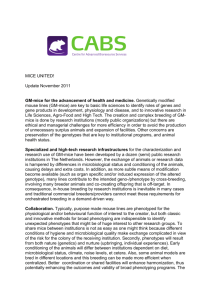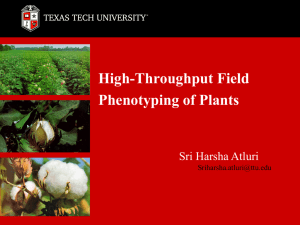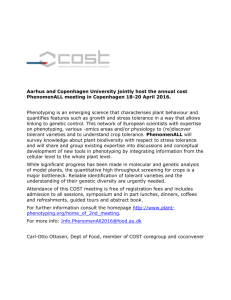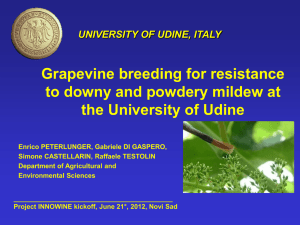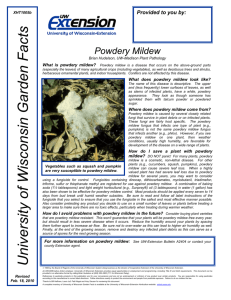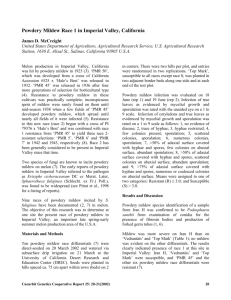Third Annual VitisGen Specialty Crop Research Initiative Project
advertisement
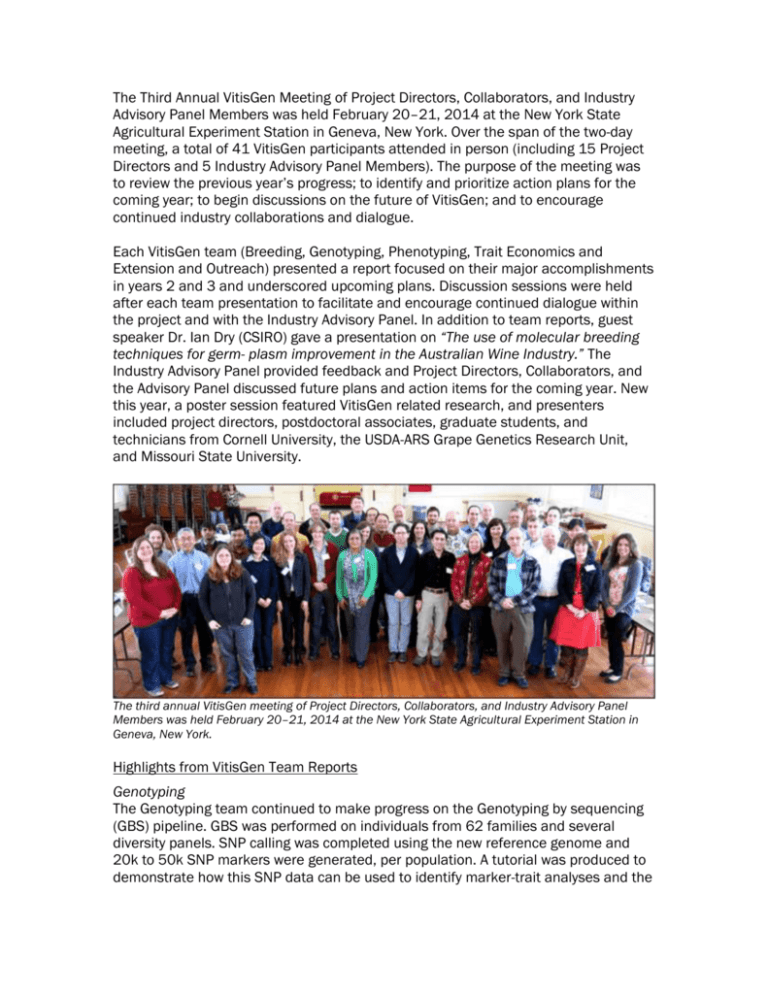
The Third Annual VitisGen Meeting of Project Directors, Collaborators, and Industry Advisory Panel Members was held February 20–21, 2014 at the New York State Agricultural Experiment Station in Geneva, New York. Over the span of the two-day meeting, a total of 41 VitisGen participants attended in person (including 15 Project Directors and 5 Industry Advisory Panel Members). The purpose of the meeting was to review the previous year’s progress; to identify and prioritize action plans for the coming year; to begin discussions on the future of VitisGen; and to encourage continued industry collaborations and dialogue. Each VitisGen team (Breeding, Genotyping, Phenotyping, Trait Economics and Extension and Outreach) presented a report focused on their major accomplishments in years 2 and 3 and underscored upcoming plans. Discussion sessions were held after each team presentation to facilitate and encourage continued dialogue within the project and with the Industry Advisory Panel. In addition to team reports, guest speaker Dr. Ian Dry (CSIRO) gave a presentation on “The use of molecular breeding techniques for germ- plasm improvement in the Australian Wine Industry.” The Industry Advisory Panel provided feedback and Project Directors, Collaborators, and the Advisory Panel discussed future plans and action items for the coming year. New this year, a poster session featured VitisGen related research, and presenters included project directors, postdoctoral associates, graduate students, and technicians from Cornell University, the USDA-ARS Grape Genetics Research Unit, and Missouri State University. The third annual VitisGen meeting of Project Directors, Collaborators, and Industry Advisory Panel Members was held February 20–21, 2014 at the New York State Agricultural Experiment Station in Geneva, New York. Highlights from VitisGen Team Reports Genotyping The Genotyping team continued to make progress on the Genotyping by sequencing (GBS) pipeline. GBS was performed on individuals from 62 families and several diversity panels. SNP calling was completed using the new reference genome and 20k to 50k SNP markers were generated, per population. A tutorial was produced to demonstrate how this SNP data can be used to identify marker-trait analyses and the tutorial was distributed internally and used by project participants during the GBS data analysis workshop at the project meeting. The pipeline to produce 5,000 marker semi-automated genetic maps is being refined and will be applied to the core mapping populations. Breeding The Breeding team has maintained the core VitisGen populations. One core population was discarded during the year due to severe cold damage, but the population was replaced with two new populations. As a result, there are now 19 core populations. Almost 5,000 leaf samples were submitted to the genotyping center for SSR processing and resulting SSRs were used for marker-assisted selection at the USDA-ARS Parlier, the University of Minnesota, Florida A&M University, and Cornell University breeding programs. Phenotypic analysis of selected individuals confirmed the accuracy of the markers used. Finally, breeders arranged schedules and shipped back-up populations to E. & J. Gallo Winery and coordinated efforts to ship two more populations for back-up in 2014. Phenotyping The three phenotyping centers continue to receive plant materials from breeders and have completed trait evaluation on some of the core populations. Powdery Mildew The powdery mildew phenotyping center received leaf samples from six populations during the 2013 field season. With replicated datasets from multiple assays in hand, the team is currently evaluating the best populations and strategies for powdery mildew resistance phenotyping in 2014. Low Temperature The low temperature responses phenotyping center developed a method to transform chilling fulfillment data, which combines chilling units and rate of budbreak into one value. The center also completed chilling fulfillment and freezing tolerance pheno- types for three core populations over two years and returned the data to breeders. Fruit Quality The fruit quality center received fruit samples from eight populations, six were frozen for HPLC and spectrophotometry-based analyses for sugars, organic acids, yeast assimilable nitrogen, and low-molecular weight phenolics, and the remaining two sets were vinified to investigate tannin extractability. During the past year, the center also developed a new GC- TOF-MS method to phenotype offodorants and a workflow for HPLC and spectrophotometry-based analyses. Trait Economics The trait economics team developed a survey for growers and producers to identify the growers’ perspectives on top priority traits and their willingness to pay for specific traits, and also to estimate the cost savings from varietal innovations. Additionally, the trait economics team evaluated the returns to alternative varietal innovations for powdery mildew resistance. Outputs include: budgets for representative vineyards in California for wine, table grapes, and raisins industry-level analysis of powdery mildew management costs evaluation of environmental costs two working papers Extension and Outreach The extension and outreach team re-designed the project website, distributed its first project newsletter, and produced and published two short YouTube videos. The first video is “VitisGen—Breeding Crosses” featuring Cornell University’s Bruce Reisch and his breeding program and the second is “VitisGen — Tracking Resistance”, which highlights the powdery mildew phenotyping center.

